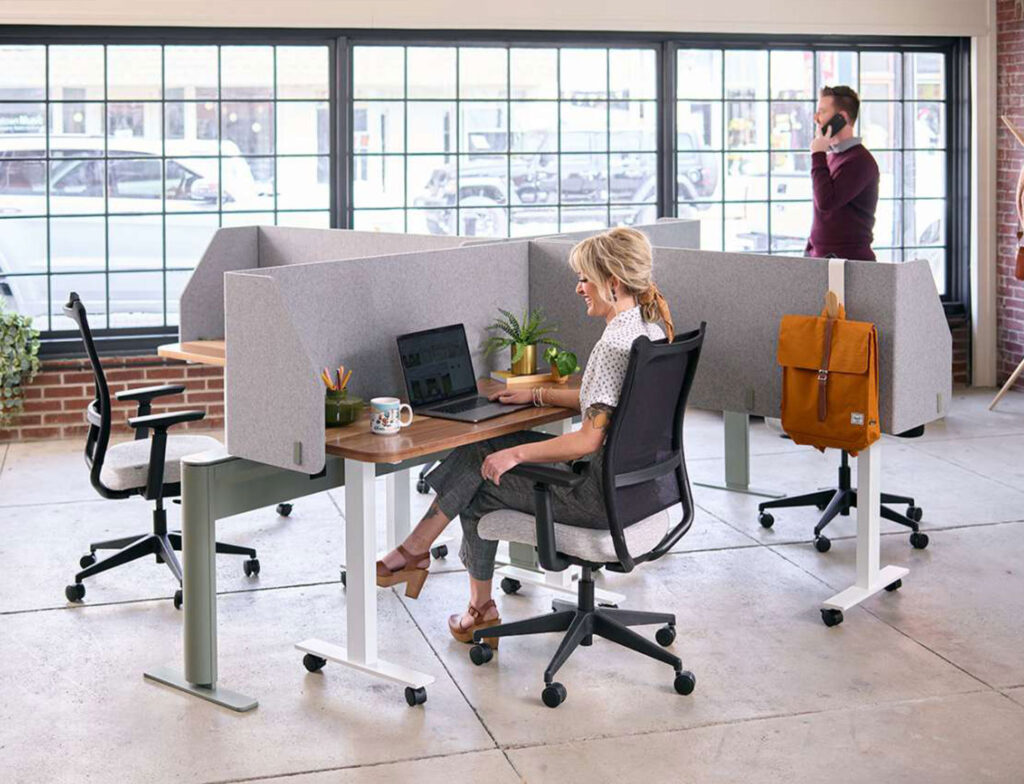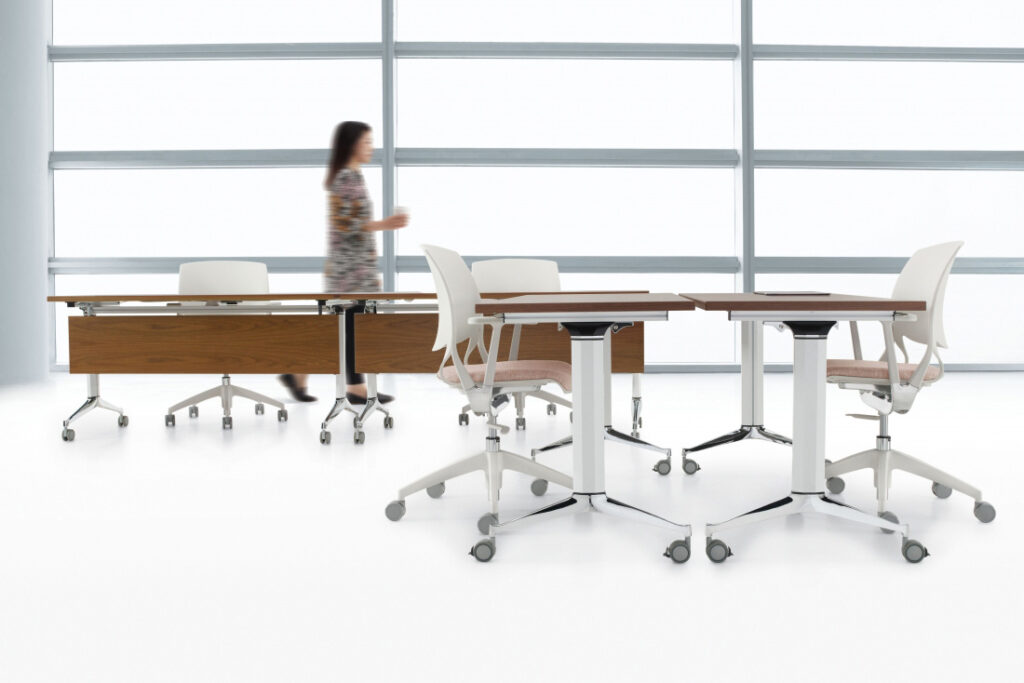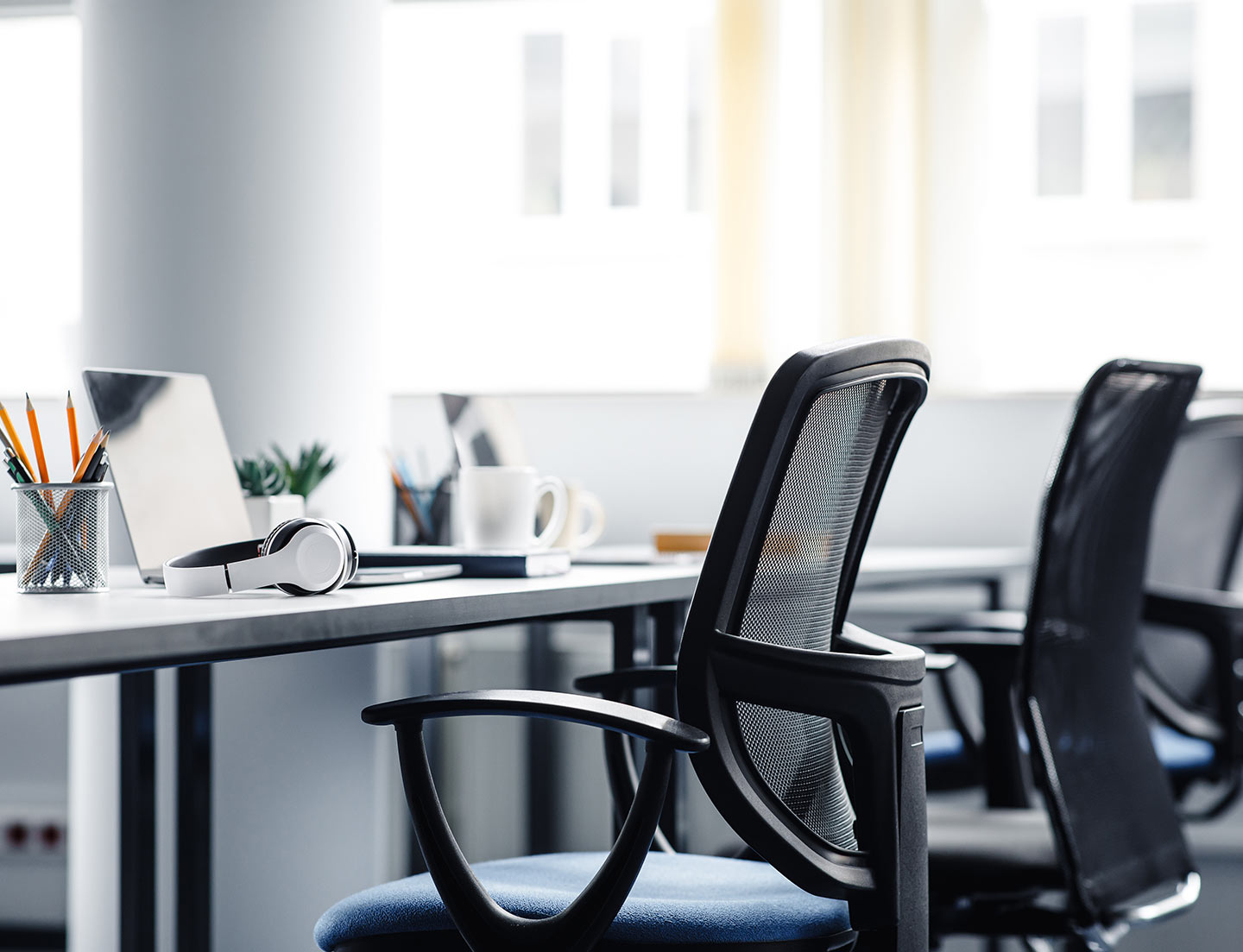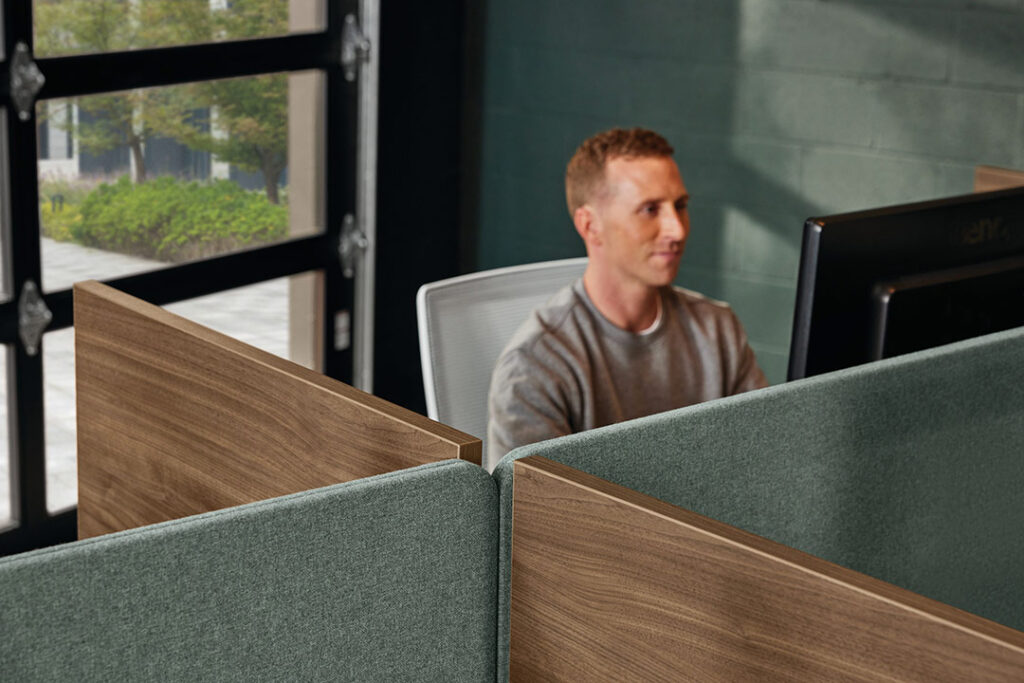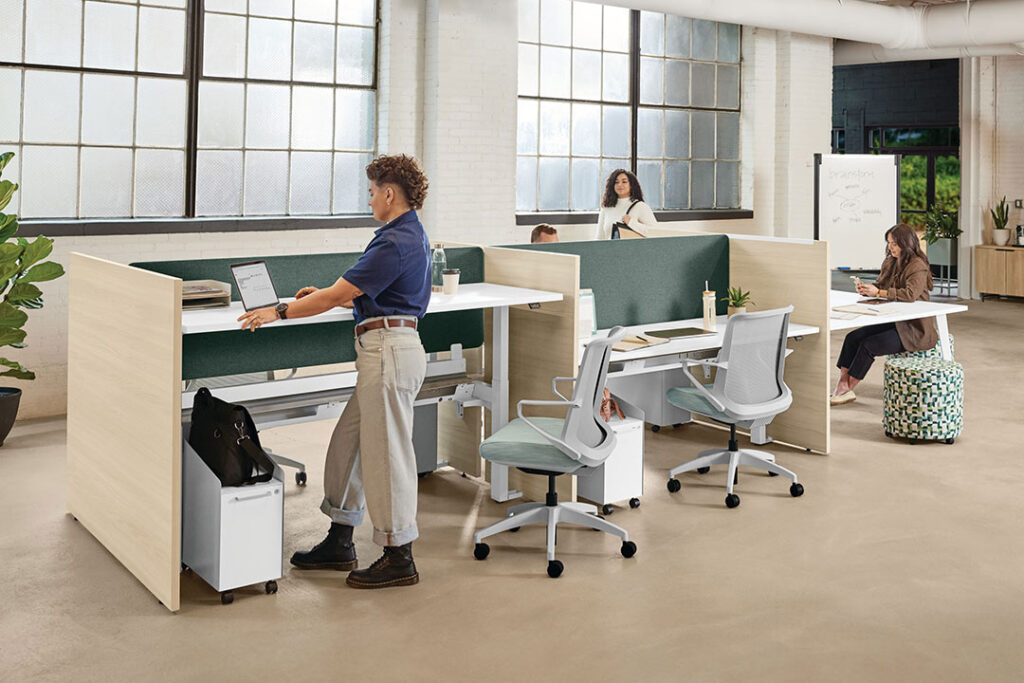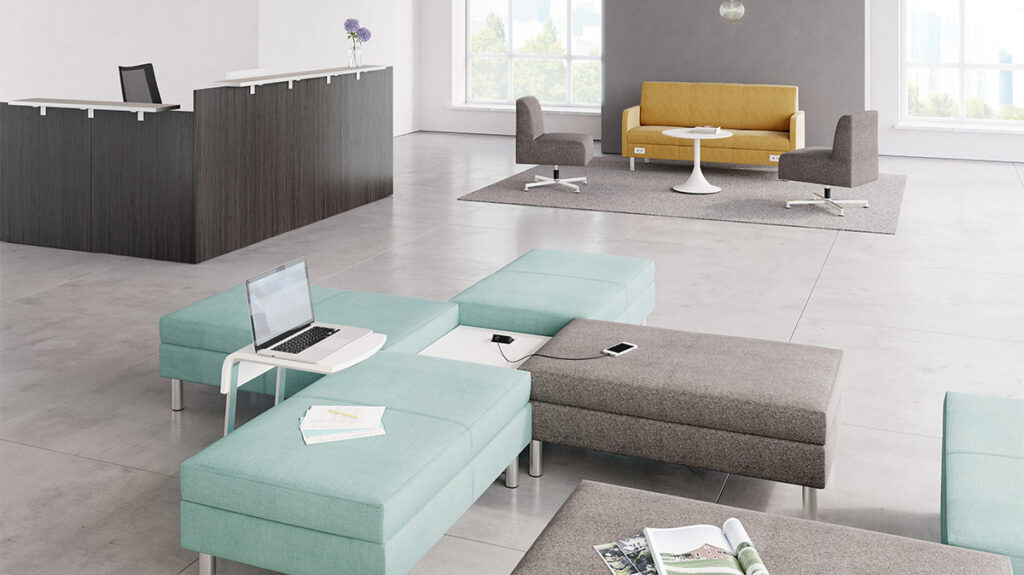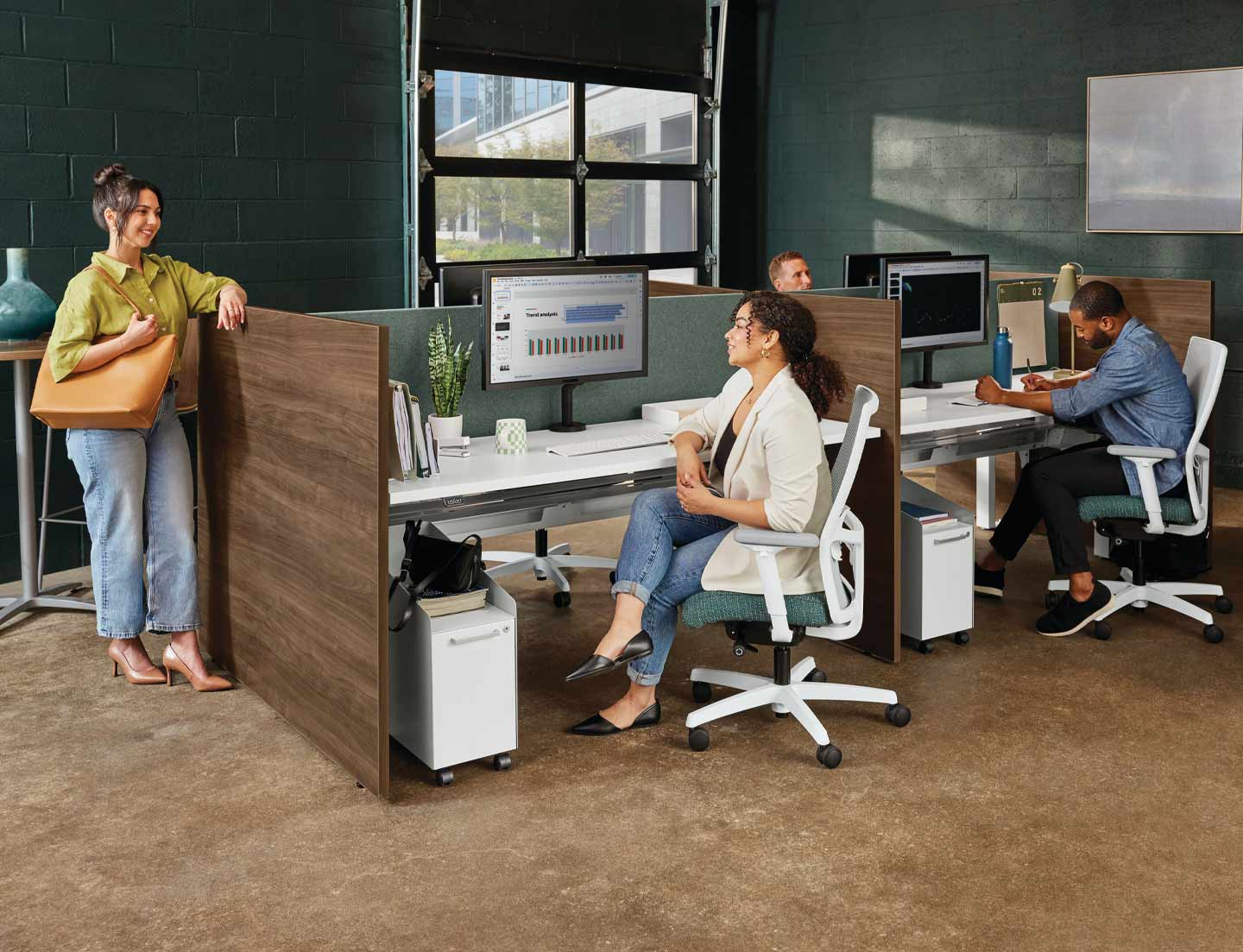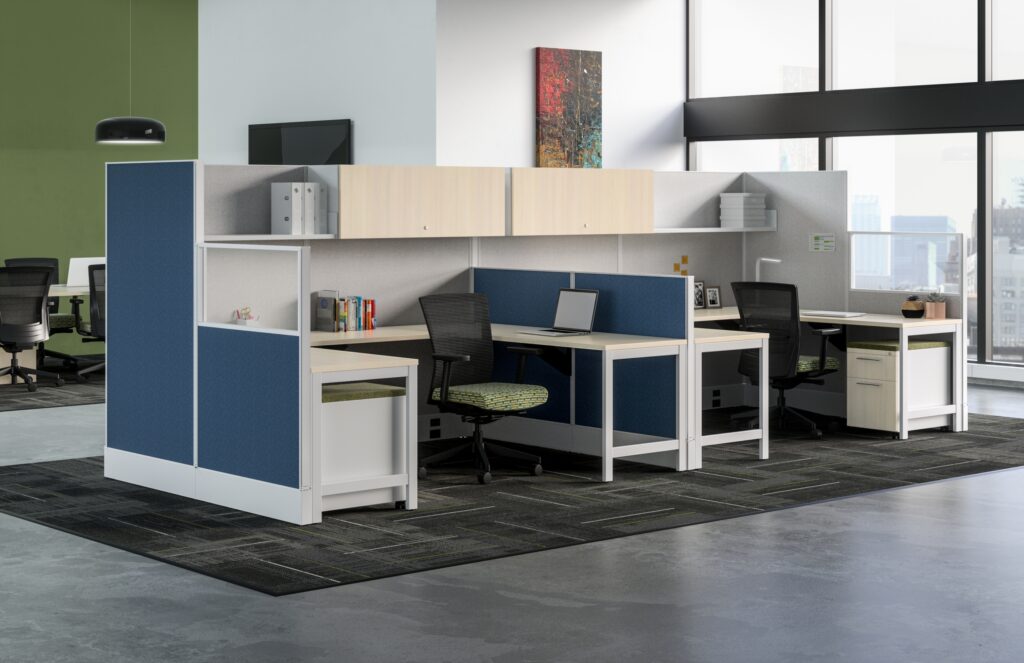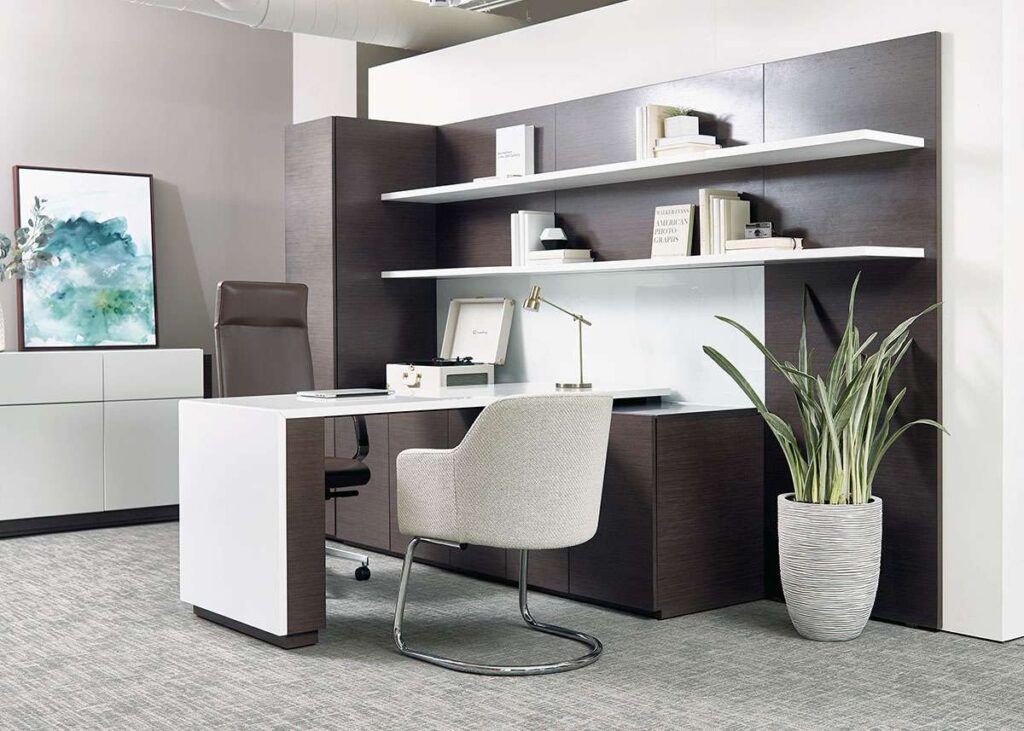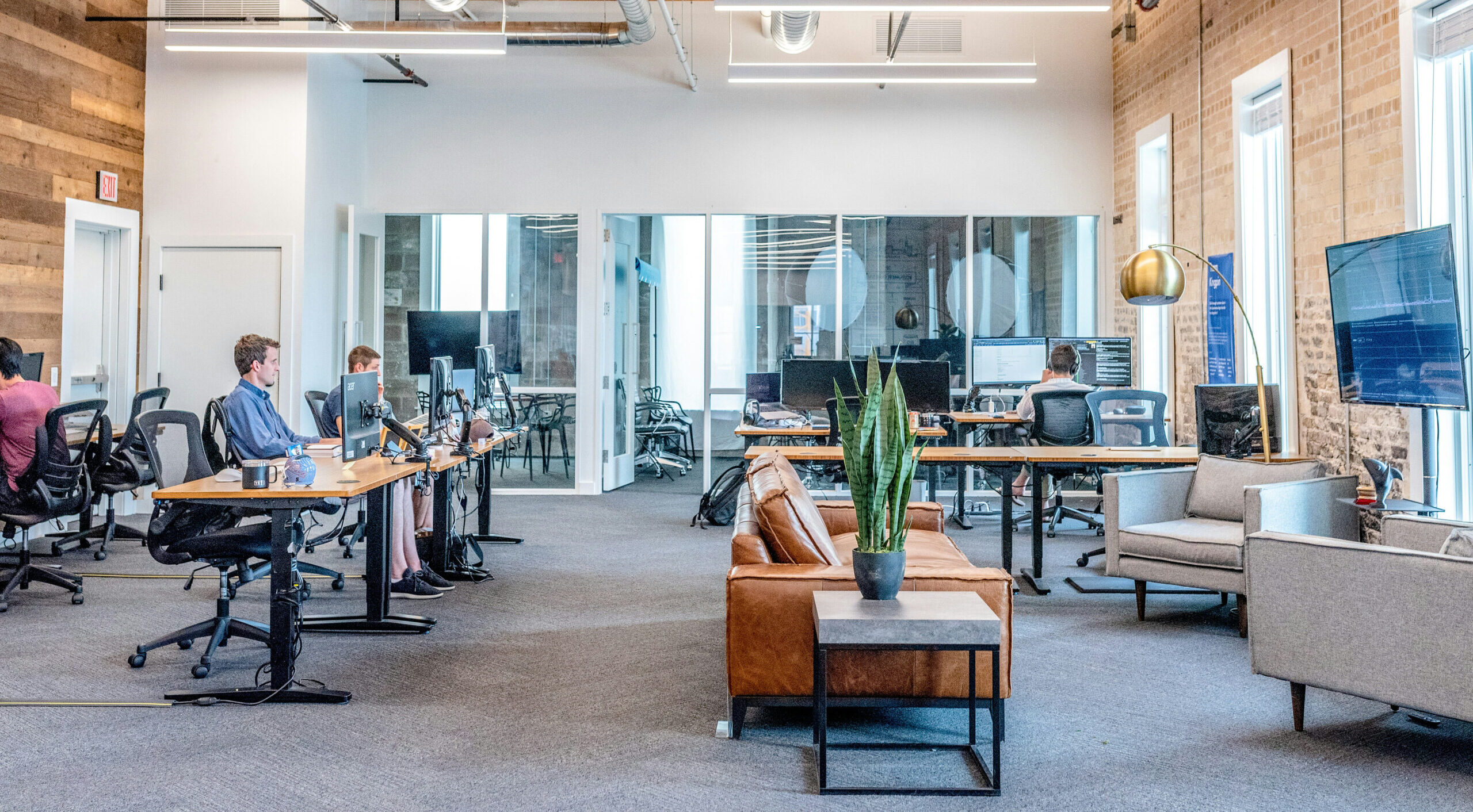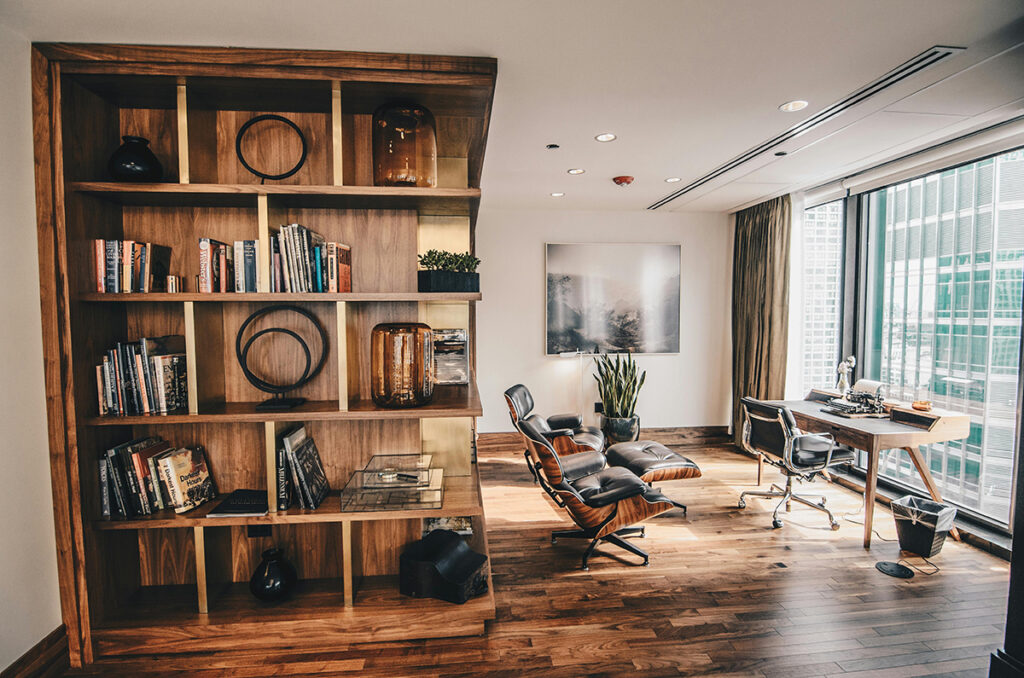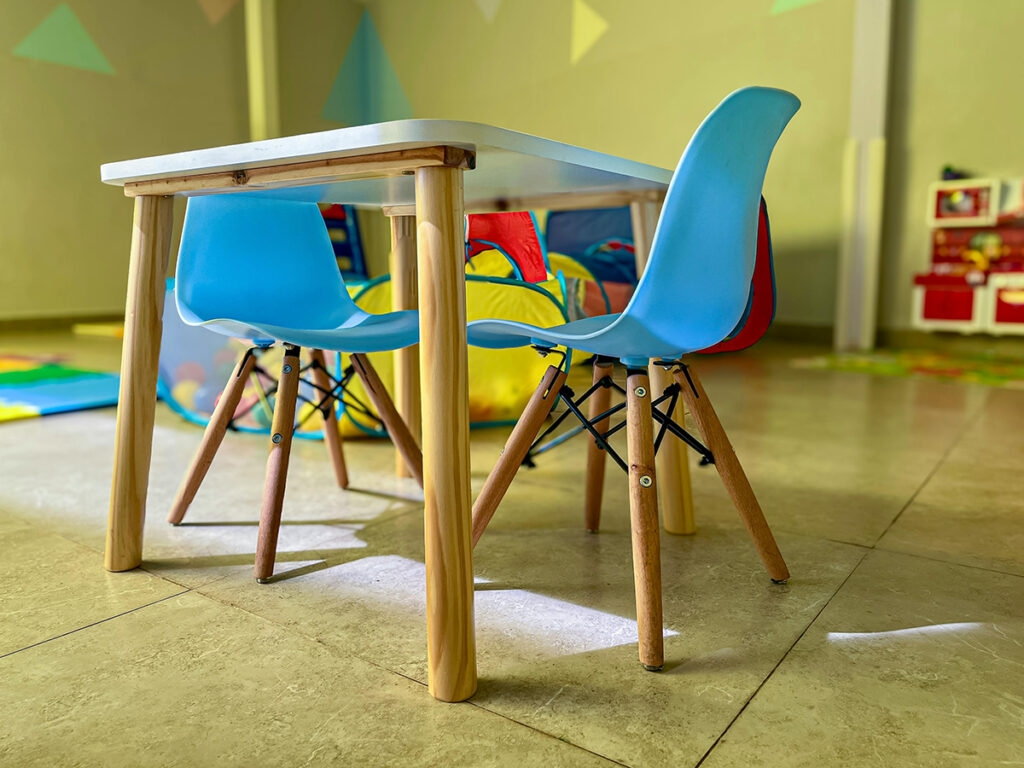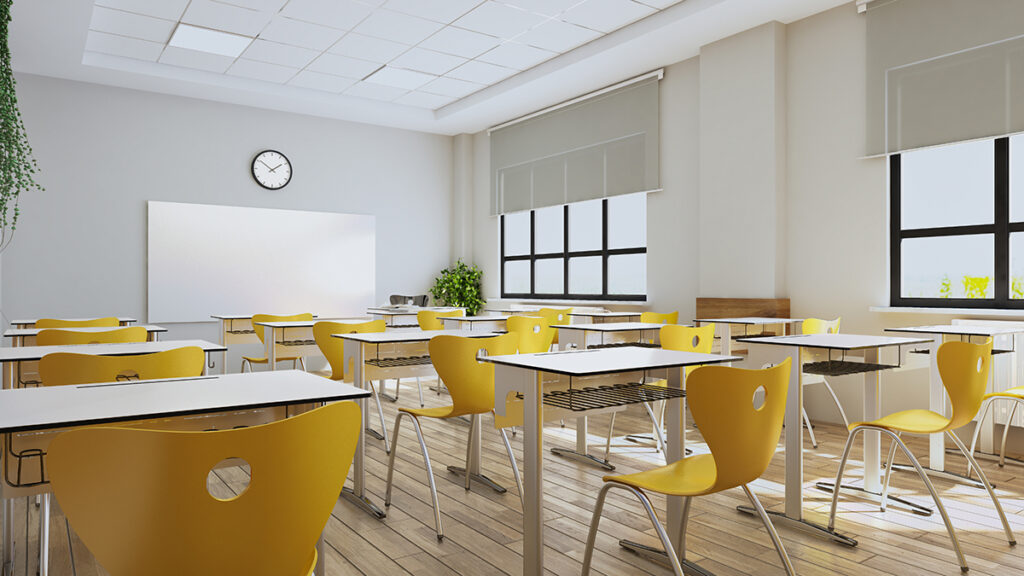Here at Legacy, we talk a lot about creating workplaces that inspire. But what does that truly mean? An inspiring workplace isn’t just about sleek aesthetics or a trendy coffee bar. At its core, it’s a place where everyone can show up, feel comfortable, and do their best work. That’s why inclusive design isn’t a box-ticking exercise—it’s a fundamental principle of a modern, productive, and ethical business.
If you’re asking, “How can I make my office more inclusive for accessibility?” or wondering about the key “workplace ADA necessities,” you’re already on the right track. It starts with going beyond the minimum legal requirements of the Americans with Disabilities Act (ADA) and weaving accessibility into the very fabric of your office design.
And a great place to start? Your furniture. The right furniture choices not only ensure compliance but actively empower your team as well. At Legacy, we believe that expert Space Planning and Design and thoughtful Office Furniture Procurement are two sides of the same coin—and both are essential for building a truly inclusive environment.
Let’s break down the furniture must-haves that transform a standard office into an inclusive workspace where everyone has a seat at the table.
The Foundation: Key ADA-Compliant Features You Can’t Ignore
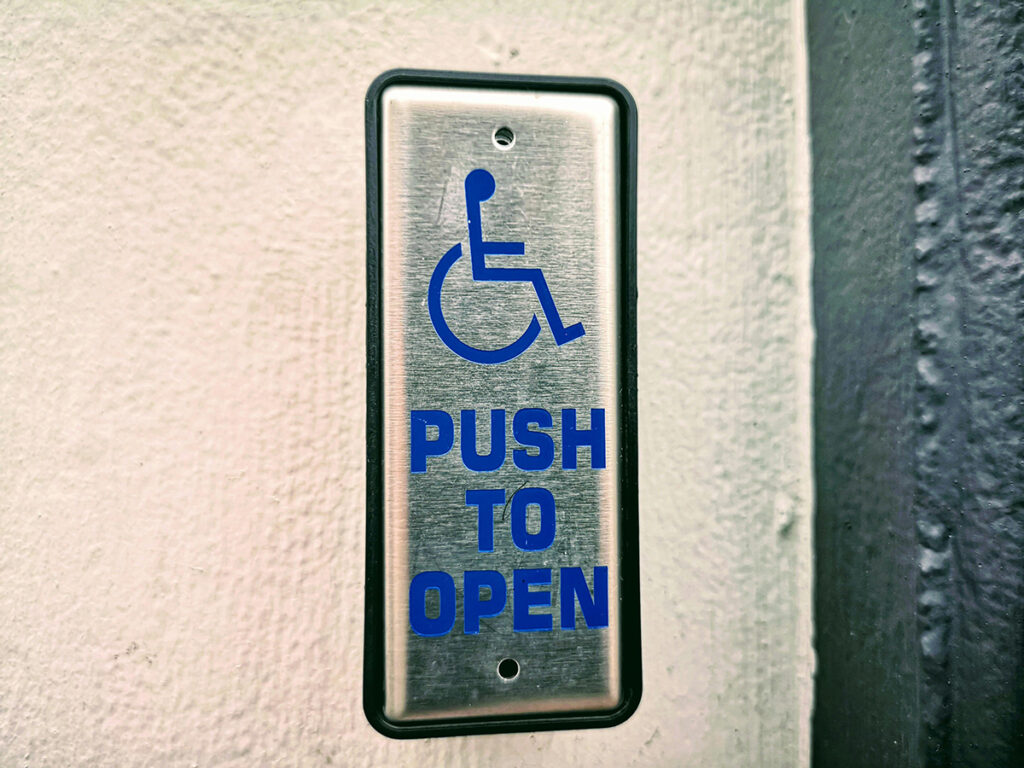
Before we get to the “nice-to-haves,” let’s cover the “must-haves.” The ADA sets clear standards for office layouts to ensure accessibility for people with mobility aids, like wheelchairs. When planning your furniture, keep these non-negotiables in mind:
1. Clear Floor Space
Ensure there is at least 30” x 48” of clear floor space at each workstation, allowing for a wheelchair to approach and maneuver. This applies to desks, common tables, and lounge areas.
2. Knee Clearance
For any seated workstation, like a desk or a reception counter, there must be adequate knee clearance. This means a minimum of 27 inches in height, 30 inches in width, and 19 inches in depth to comfortably accommodate a standard wheelchair user.
3. Accessible Tables & Desks
The height of your work surfaces is critical. ADA-compliant desks and tables should be no higher than 34 inches and no lower than 28 inches from the floor. This range ensures that a standard sized wheelchair can fit comfortably underneath.
4. Traffic Lanes
Maintain wide, clear aisles and pathways. The minimum for a primary pathway is 36 inches wide, but we always recommend 48 inches for a more comfortable and collision-free flow.
Space Planning: The Critical Component
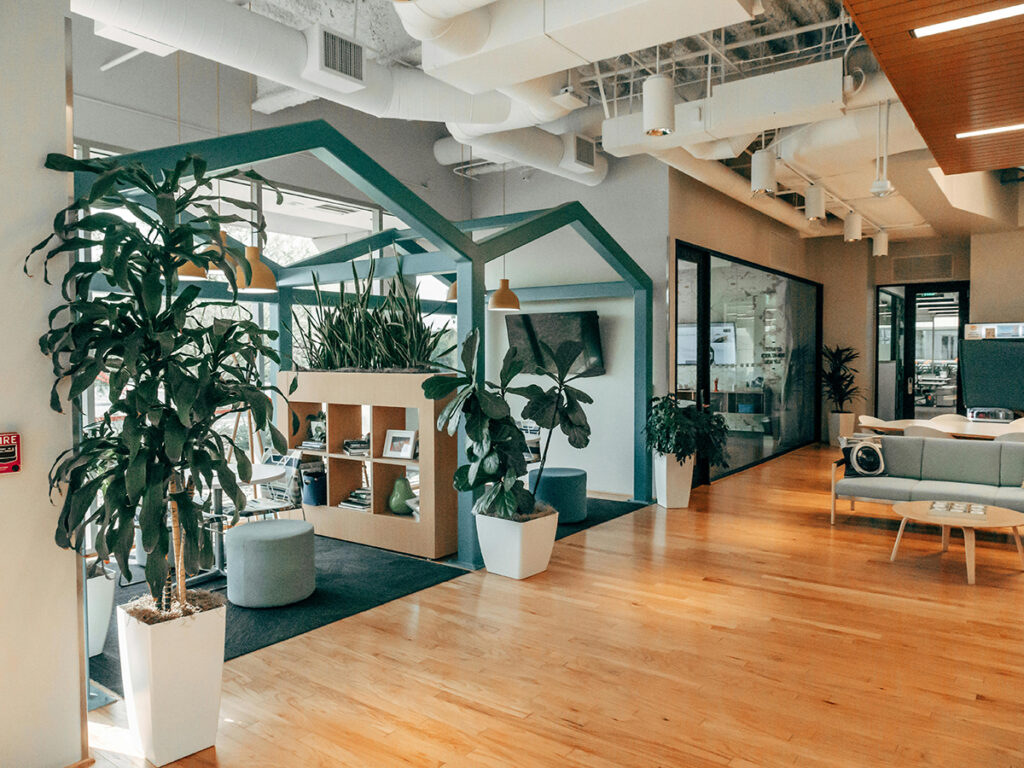
When it comes to offering an inclusive work environment, expert space planning becomes critical. A furniture catalog can tell you if a single desk is compliant, but it can’t ensure your entire floor plan flows seamlessly. Our design team at Legacy specializes in creating layouts that integrate these requirements from the ground up, avoiding costly retrofits and ensuring a harmonious, accessible flow throughout your entire office.
The Game-Changer: Adjustable-Height Desks
If there’s one piece of furniture that embodies the spirit of inclusivity, it’s the adjustable-height desk. Also known as sit-stand desks, they are a powerful tool for universal design—benefiting a far wider range of people than you might think.
- For Wheelchair Users: A standard fixed-height desk may be either too high or too low for someone in a wheelchair. An adjustable desk can be lowered to the perfect height for a seamless transfer from a wheelchair.
- For People of Varying Statures: A tall employee and a shorter employee have vastly different ergonomic needs. Adjustable desks empower everyone to find their ideal, healthy working position.
- For Overall Well-being: The ability to alternate between sitting and standing can reduce back pain, improve circulation, and boost energy levels for the entire team.
However, not all adjustable desks are created equally. We help you navigate key features like quiet motors, easy-to-use controls (including paddle switches for those with limited hand dexterity), and memory presets. We partner with top manufacturers who combine durability with accessible design, ensuring your investment lasts and serves every member of your team.
The Overlooked Essential: Truly Inclusive Seating Options
When people think of accessible seating, they often picture one or two designated “ADA chairs.” True inclusivity means providing a range of seating options that cater to different bodies and abilities throughout the office.
Here are a few often-overlooked options we integrate into our client’s spaces:
- Seating with Ample Armrests: Armrests are crucial for individuals who need leverage to sit down or stand up. Look for chairs with sturdy, preferably adjustable, armrests. In collaborative areas, include some sofas and lounge chairs with firm armrests instead of only backless benches or low-slung seating.
- Varied Seating Heights and Depths: A deep, plush chair might be comfortable for some but impossible for others to use without slouching. Provide a mix of seating with different seat heights and depths and always include some options with a firmer seat cushion that makes it easier to get in and out of.
- Mobility-Aware Design: Avoid heavy chairs that are difficult to move. Lightweight, easy-to-pull-out task chairs are more accessible for everyone. In meeting rooms, consider a mix of standard chairs and chairs without arms to allow for the potential of lateral transfers to and from a wheelchair.
This nuanced approach to office furniture procurement is what sets Legacy apart. We don’t just sell you desks and chairs; we help you curate a collection of desking and seating that supports diversity, ensuring that every corner of your office—from the waiting room to the breakroom—is welcoming and functional.
Your Partner in Building a Better Workspace
Creating an inclusive office is more than a checklist. It’s a thoughtful process that blends empathetic design with precise, compliant furniture solutions. It’s about understanding that an employee’s ability to be productive is directly linked to their physical comfort and access to their environment.
At Legacy, we combine our expertise in Space Planning & Design with our deep knowledge of office furniture procurement to create seamless, inclusive workplaces from concept to completion. We handle the complexities of ADA requirements, source the best-in-class inclusive furniture, and create a floor plan that brings it all together in a way that is both beautiful and brilliantly functional. Are you ready to build a workspace where everyone can thrive?
